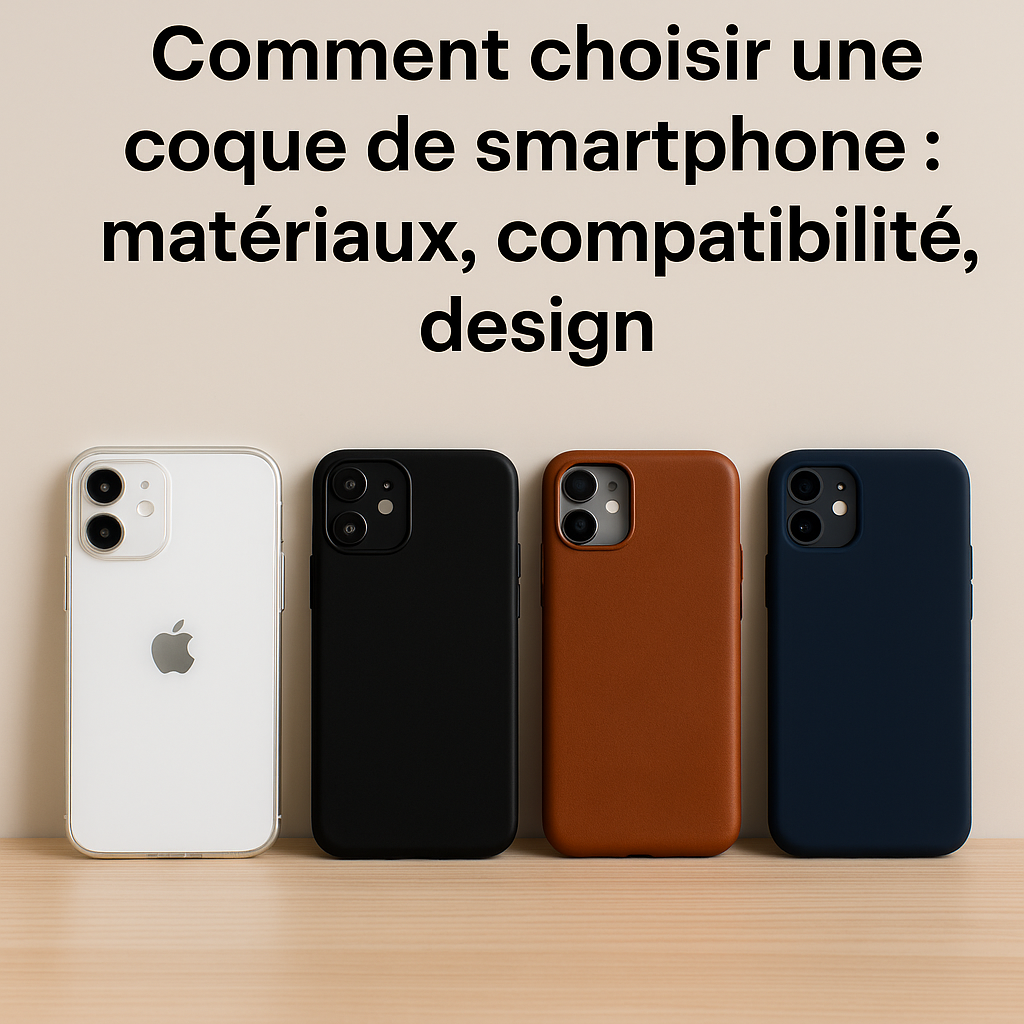Owning an expensive smartphone also means choosing reliable protection. A smartphone case is the first line of defense against drops, scratches, and everyday wear and tear. But with so many models, materials, and styles to choose from, how do you make the right choice? In this comprehensive guide, I explain the criteria to consider (materials, compatibility, design) so you can choose a case that's perfectly suited to your device and your style.
1. The essential criteria for choosing a case
Before diving into materials and designs, remember that a good case must meet several criteria:
-
Protection : Shock absorption, corner coverage, slightly raised edges around the screen and camera
-
Fit/Compatibility : Precise cutouts for buttons, ports, camera, wireless charging compatibility if needed
-
Ergonomics & handling : weight, thickness, grip (adhesion), slipperiness
-
Durability & wear : resistance to scratches, changes in color, effects of time
-
Style and aesthetics : color, patterns, transparency, textures
-
Additional features : MagSafe, kickstand, card holder, accessory compatibility
-
Price vs. quality : don't choose solely on price, but on the balance with the protection offered
2. Materials: advantages, disadvantages & uses
Each material has its strengths and weaknesses. Here are the most common ones:
| Material | Main advantages | Disadvantages / Limitations | Recommended use / typical profile |
|---|---|---|---|
| Rigid plastic / polycarbonate / PC | Lightweight, versatile design, easy to form | Less shock absorbent, can be slippery | For those who want a thin and aesthetic case |
| TPU (flexible thermoplastic) | Flexible, good compromise between rigid and soft, moderate absorption | Less rigid for very strong falls | Good all-round option |
| Silicone / rubber | Very good cushioning, good grip, easy to put on/take off | Attracts dust, may yellow, wear over time | For clumsy users or intensive use |
| Leather / Faux leather | Premium appearance, elegant patina over time | Less efficient for shocks, requires maintenance | For those who want elegance more than robustness |
| Dual mixture (plastic + rubber, etc.) | Combination of rigidity and absorption | Complexity in manufacturing | For reinforced “hybrid” hulls |
| Ecological materials (wood, bioplastic, cork, etc.) | Sustainable alternative, natural aesthetics | Less widespread, sometimes more fragile, higher cost | For an ecologically sensitive public |
3. Model Compatibility & Fit
A case must be perfectly adapted to the smartphone model:
-
Check the exact model (e.g. “iPhone 15 Pro Max”, “Samsung Galaxy S24 Ultra”)
-
Make sure the cutouts (cameras, microphones, sensors, ports) are aligned properly
-
If you are using wireless charging , the case should not be too thick or contain materials that block
-
If you are wearing a tempered glass/screen protector , the case should not “push” on the glass (the case should have a slightly raised edge, but not too much)
-
If the case has a kickstand or magnets (MagSafe) , check compatibility
4. Design & Features
Design shouldn't just be an accessory; it enhances the user experience. Here are some points to consider:
-
Grip / texture : a slightly rough or matte surface gives less glide
-
Colors / patterns / transparency — transparent cases let the phone's design show through
-
Feature gains :
-
Magnets for attachment (MagSafe or others)
-
Kickstand for video viewing
-
Integrated card holder
-
Shockproof corners or absorption pads
-
5. Practical advice & pitfalls to avoid
-
Don't sacrifice protection for a slim design
-
Be wary of very cheap cases without reinforcements - they may not protect effectively
-
Clean transparent/silicone cases regularly to prevent yellowing
-
Replace the hull if you see cracks or deformations — a cracked hull is no longer reliable
-
If possible, read customer reviews (photos, tests) to judge the real quality
-
Use internal links to your collections (e.g. “iPhone cases”, “reinforced cases”) in the text
6. Example of the structure of an ideal hull (profile)
For a “typical” user who wants both style and protection, here is what an “ideal case” might be:
-
Hybrid material: hard shell (PC) + TPU insert for cushioning
-
Reinforced corners
-
Raised edge around screen/camera
-
Precise cutouts, wireless charging compatible
-
Non-slip texture
-
Modern/transparent design
-
Guarantee (if possible)
Then, in the article, you can present your recommended models (with photos and links), showing how they meet these criteria.
Conclusion & Call to Action
In short, choosing the best case for your smartphone requires a good balance between protection , compatibility , and style . Knowing the materials, necessary adjustments, and interesting features will help you make an informed choice.
👉 Discover our entire selection of cases on AccessoryWorld.ch , classified by model (iPhone, Samsung, etc.) and by level of protection.


